Overview
COMPOSITION
- Does not corrode metals, steel screws and supports
- Superior moisture and better resistance to humid environments
- Stronger and harder surfaces for a better impact resistance
- Safe to use unlike other MgO boards with MgCl2 in their composition
- Does not have halogenide as a problem
Comparison for Boards with raw material using Magnesium Chloride V.S Magnesium Sulfate Physical Properties
| Strength | Water Resistance | Hygroscopic return “Crying boards phenomenon” | Corrossion Resistance to Metal | Warping | Hardening Condition | Water Softening Coefficient | |
|---|---|---|---|---|---|---|---|
| MgCl2 | High | Good | Possible | Poor | More | Fast | ≦0.30 |
| MgSO4 | High | Better | None | Excellent | Minimal | Fast | ≧0.80 |
Water softening coefficient is a parameter indicative of a material’s water resistance nature, expressed as K-f / F.
| Content | 72H Moisture Absorption rate | 168H Moisture Absorption rate | 1000℃ Burning Combustion Shape Retention | |||
|---|---|---|---|---|---|---|
| MgCl2 | 38.20% | 72.60% | ≦ 50% | |||
| MgSO4 | 10.80% | 31.80% | ≧ 70% | |||
Dimensions & Tolerance
TRILITE® boards are produced with standard thickness ranging from 3mm up to 20mm.
| Standard Dimensions | 1200 x 2400mm | 1220 x 2440mm | |||
|---|---|---|---|---|---|
| Optional Width | 600mm | 900mm | 1000mm | 1200mm | 1220mm |
| Optional Length | 1830mm | 2135mm | 2500mm | 2700mm | 3000mm |
| Density | 1080 kg/m3 ( ± 150 kg/m3, thickness dependent ) |
| Width Tolerance | -2mm , + 2mm |
| Length Tolerance | – 2mm , + 3mm |
Thickness Tolerance
Standard Boards
| 3mm, 4mm , 6mm | ± 0.3mm |
| 8mm, 9mm, 10mm | ± 0.6mm |
| 12mm | ± 0.8mm |
| 15mm, 18mm | ± 1.0mm |
| 20mm | ± 1.2mm |
Sanded Boards
| 3mm, 4mm, 6mm, 8mm, 9mm, 10mm | ±0.3mm |
| 12mm, 15mm, 18mm | ±0.5mm |
| 20mm | ±0.8mm |
Above based on 1 side sanded. For a more precise thickness tolerance, sanding on 2 sides is also possible.
Finished Edges
TRILITE® boards are available in different board edges , such as :
- Square Edge
- 45 degree Bevelled Edge
- Tapered Edge
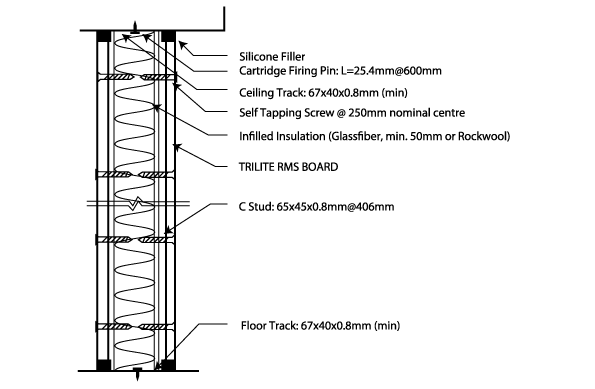
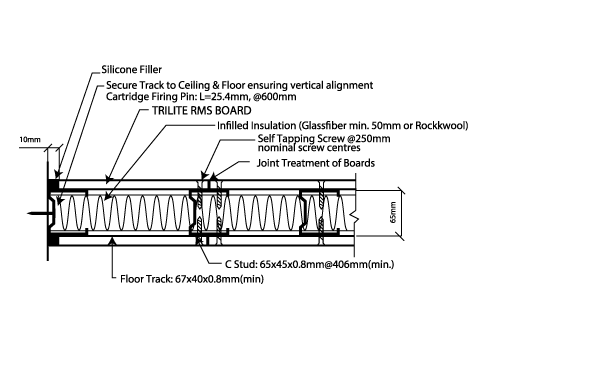
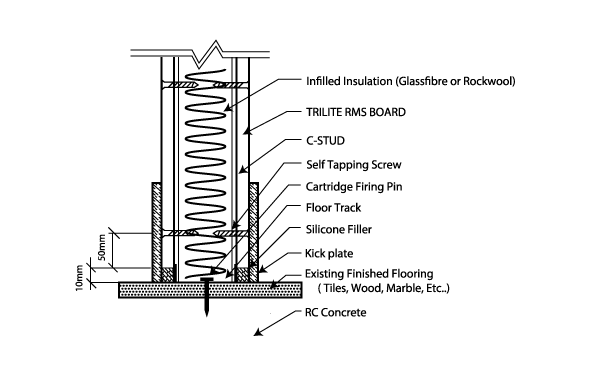
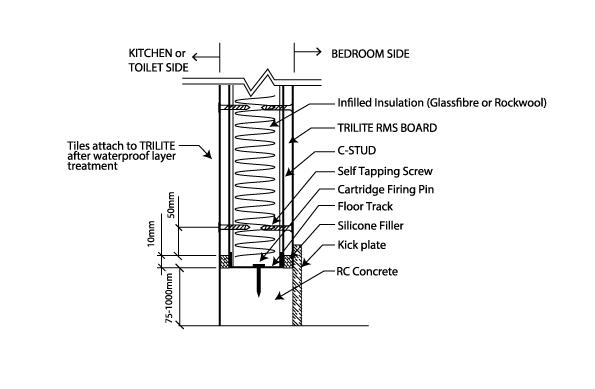
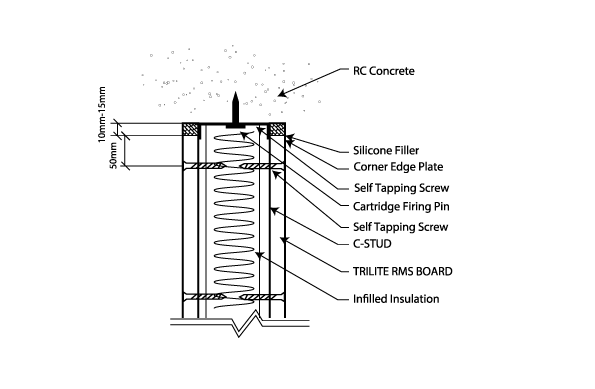
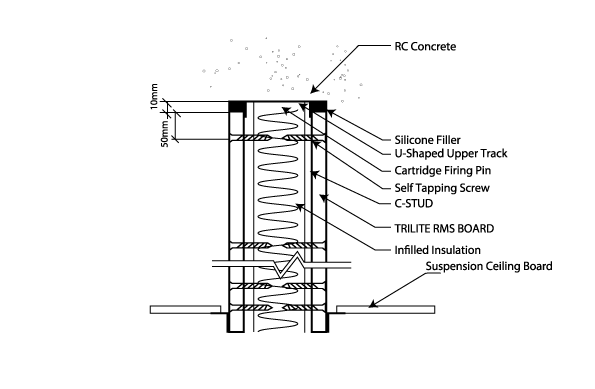
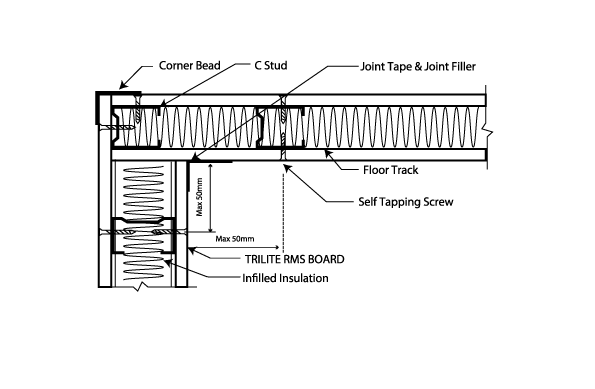
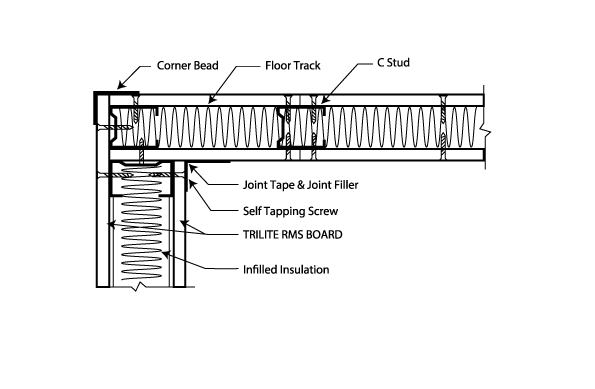
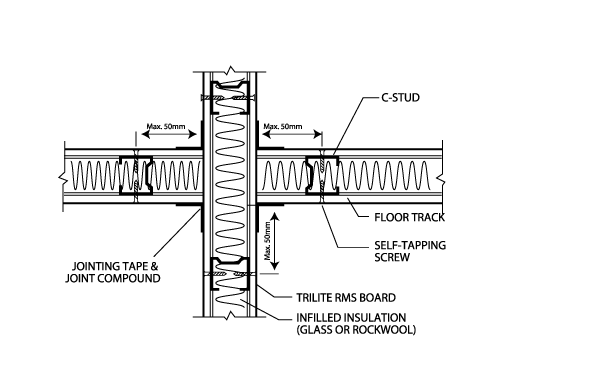
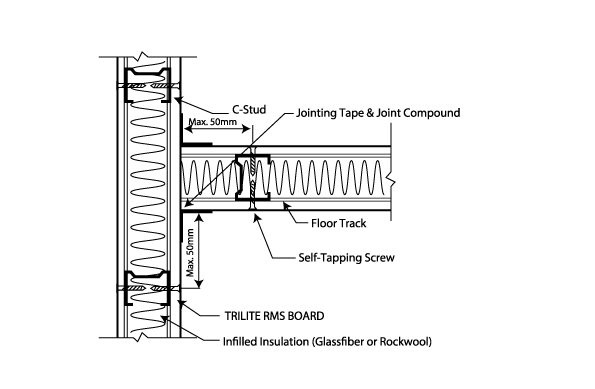
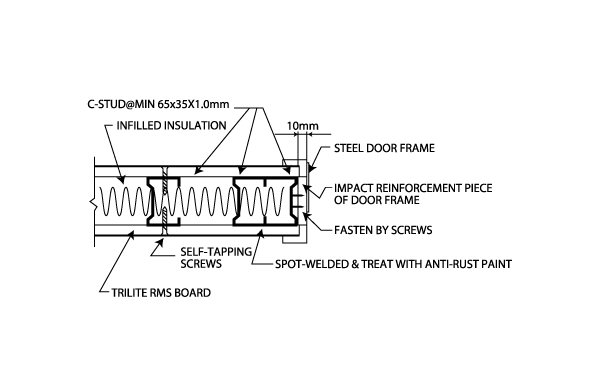
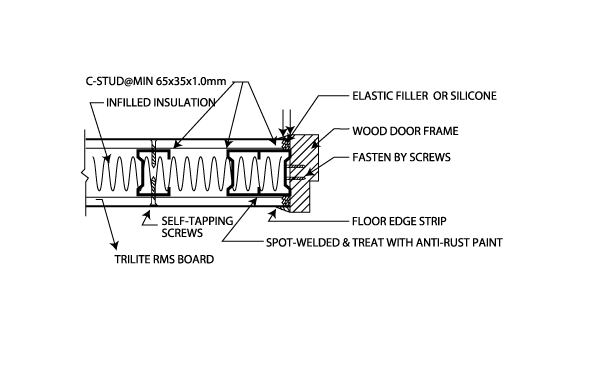
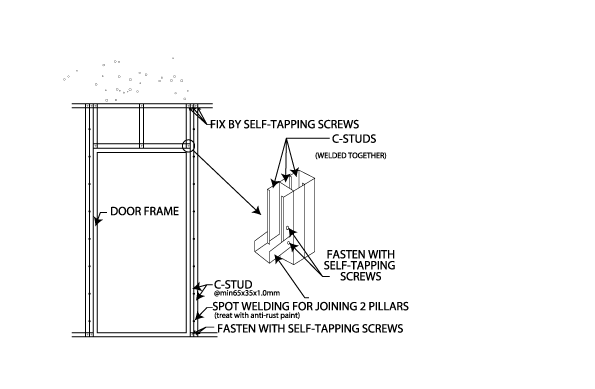
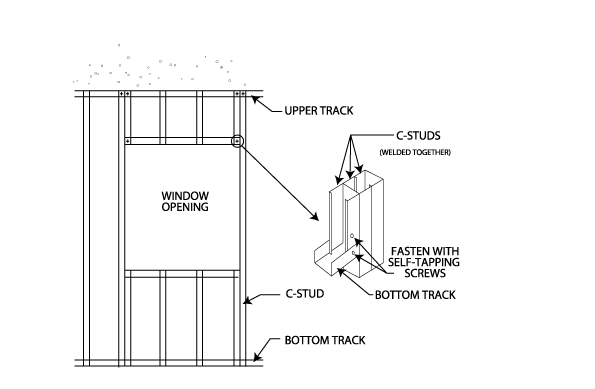
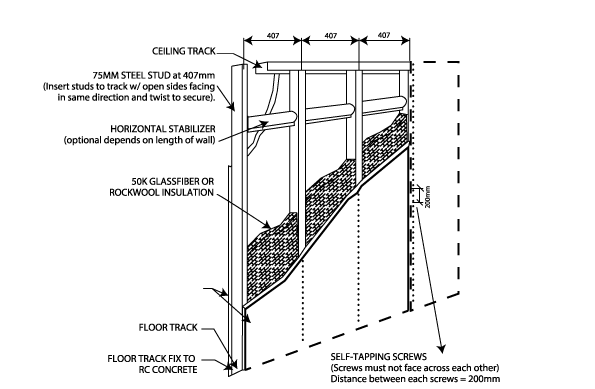
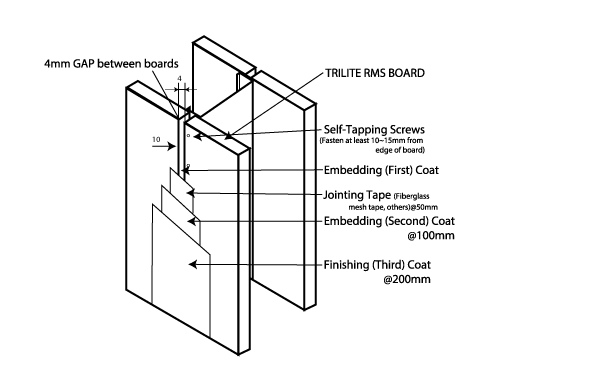
- Steel studs must be more than 1.2mm thick, distance between each studs below 300mm
Use self tapping steel screws fix @ 150mm centres below, screw head must be wider than screw hole. - Reinforcement steel must be placed at back of the board if the tiled walls will be hanged with other materials (cannot be directly fix only on the board without reinforcement).
- Sealants must be applied to cover adhesion surface between board and tiles completely, sealant adhesion must be strong enough to avoid delamination and stripping.
- It is recommended to use boards in 12mm and above thickness for exterior wall applications.
-
Boards must never be carried in its horizontal position.
-
Boards should be carried on its long edges ( vertically) at all times.
-
Boards must never be stacked on its edge or upright position.
-
Boards should be stacked & handled carefully to avoid damage.
-
Boards must never be piled up with greater than 400mm spaced support battens
-
Correct way to store TRILITE® RMS Boards
- Boards should be slided sideways when lifted from pallets.
- Boards are supplied in packs on wooden pallets to permit safe handling by forklift trucks.
- Boards must be allowed to dry ( when becomes wet) prior to fixing, installing or painting.
- Care should be taken to avoid damage to the ends, edges and surfaces.
- If outside, a protective plastic sheet must protect the sheets from getting rain and the elements.
- Boards must never be piled up more than 3 pallets on top of each other.
Sawing
Can be easily cut using a normal saw, fret saw or an electric tool. When large quantities of the boards are to be cut, the use of a circular hand saw is advisable.
Drilling
Use masonry drills to countersink or drill screws. Use low/high speed drills for better results. Place the board under the drilling location for a clean hole. Do not use hammer action.
Planing & Sanding
The edge can be planed or smoothed with a surform, rasp or file. Use cponventional papers for sanding.
Fixing
SCREWING For screwing, it is recommended to use self drilling, self countersunk screw in stainless steel. Screw diameter should be from 3.5~4.2mm, length should be 2.5 to 3 times the panel thickness. Fixings at 200mm nominal centers, perimeter of panel fixings should be 10~15mm from the edge of the board and all edges should coincide with support structures. Thinner boards can be stapled with 16 gauge, 6mm crown x 25mm long rust-proof staples.
Cutting
ROUGH CUTTING Can be easily cut either longitudinally or traversely. A cut should be made on the face side of the board by means of a cutter or a knife. A line may be ruled prior to cutting. The rule can be drawn down the board at the required distance and can be scored with the knife at the end of the rule. The boards should then be pressed with both hands, cut and snap over a straight edge. For smooth and clean cut, use a circular saw (at least 120 carbide teeth) and set the speed above 3000 rpm.
Nailing
NAILS Can be manual or power nailing using a flat headed, preferably stainless steel nail. Diameter should be 2.2 or 3.1mm, length 3 to 3.5 times the panel thickness. For power nailing, tools should be set to 3-4 bars and then finely adjusted to achieve required penetration. It is essential to position the boards steadily against the background structure.
Support Structures
SUPPORT On timber or steel for 6mm, 8mm and 9mm supports should be 400 centers. for 10mm, 12mm at 600 centers.
Jointing
TRILITE RMS are suitable for fixing to both timber and metal framing. Studs are recommended to be placed at 407mm centers. Enough gap in between joints of 2 boards is required, which is normally at 4mm. Be sure to handle the fillings of the gaps for partitions. Before filling, each gap must be clean and removed of all dusts (including steel brush), otherwise the contact point between the sealants and the board is separated without bonding together and may result in surface cracking. Should be constructed according to local building regulations & practice.